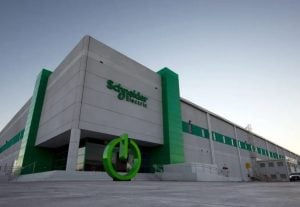Patriot Lithium increases ground by 250% to become largest claim holder within Ontario’s ‘Electric Avenue’
New claims adjoin and partially surround Frontier Lithium’s 42Mt PAK-Spark project
They also cover over 70km strike of highly prospective Bearhead Lake fault zone that hosts Gorman and PAK-Spark
Patriot Lithium is now the largest claim holder within the lithium-rich ‘Electric Avenue’ in Ontario, Canada, with claims that adjoin and partially surround Frontier Lithium’s world-class PAK-Spark project.
The company’s Gorman project previously sat some 68km northwest and along trend from the ~42Mt PAK and Spark deposits – one of the largest and highest-grade hard rock lithium deposits in North America.
Both projects are found within the ‘Electric Avenue’, which is named for its scale and prospectivity for battery minerals with drilling at PAK-Spark returning a massive 398m intersection grading 1.88% Li2O including 23m at 3.12% Li2O in May.
Patriot Lithium’s (ASX:PAT) exploration has also returned encouraging results with rock chip sampling returning multiple results over 3% Li2O from each of the G0-G3 pegmatites, which form a 5.2km long spodumene-bearing LCT trend that is open along strike to the northwest and southeast.
This led the company to stake 21 mineral claims totalling 409 hectares to cover new targets identified along the Chocolate Milk pegmatite trend, where a 630m extension has been identified through reconnaissance mapping, bringing the total length of this trend to over 1km.
Largest Electric Avenue claim holder
Location of the new claims. Pic: Supplied (PAT).
The company has now secured rights to multiple claim packages that make up the Berens and Borland projects to become the largest claim holder in the Electric Avenue.
Should the relevant options be exercised, Patriot will have a semi-contiguous regional claim package exceeding 890km2 with the new claims covering several unexplored LCT pegmatite occurrences that are up to 40m wide.
The new claims also cover over 70km of strike over the highly prospective Bearhead Lake fault zone, which hosts the company’s Gorman project in the northwest and Frontier’s PAK-Spark in the southeast.
“These strategic transactions involving the Berens and Borland projects are transformational for Patriot in the region, increasing our potential claim holding in the highly prospective ‘Electric Avenue’ lithium district in Ontario by an enormous 250% to around 890km2,” managing director Nicholas Vickery said.
“Patriot has now acquired or secured rights over 70km of strike length along one of the most exciting lithium regions in the world. The world-class PAK-Spark lithium development project to south-east is a clear validation of the potential that exists in the region, with one of the largest and highest-grade lithium deposits in North America.
“Patriot already has confirmed lithium mineralisation at Gorman within a 5.2km semi-continuous trend of outcropping pegmatites, showing real potential for scale and grade.
“Preliminary aerial reconnaissance of these newly secured claims has indicated the potential for further significant pegmatite outcropping along the Bearhead Lake fault zone, the same trend as Frontier Lithium’s PAK-Spark project and our existing Gorman project.”
He added that the district is characterised by extensive vegetation and soil cover over prospective bedrock, resulting in it being historically underexplored for lithium.
“As such, we expect the outcropping pegmatites that have been identified to date may only be the ‘tip of the iceberg’ and we can’t wait to commence detailed exploration of these newly acquired properties,” Vickery said.
Berens and Borland projects
The ~486km2 Berens project, which the company is acquiring from Midex, is directly along the Bearhead Lake fault zone – a major crustal break that hosts numerous large two-mica granite intrusions with associated spodumene-bearing pegmatites.
Frontier’s claims that host the PAK project is along the same crustal break, directly adjacent to the Midex claim package.
The strong spatial alignment of pegmatite-hosted lithium deposits and occurrences parallel to the northwest-southeast striking Bearhead Lake fault zone is what gave the district the name ‘Electric Avenue’.
Historical exploration dates back to the late 1930s and focused primarily on the historical Berens River gold mine in the northeastern portion of the project.
All exploration up until 2022 was for polymetallic mineralisation, dominantly gold, silver and zinc before Midex carried out a 10-day prospecting program along a section of the Bearhead Lake fault zone.
This reconnaissance program identified numerous outcrops of white, fractionated (muscovite-tourmaline-garnet-bearing) pegmatites, including a 200m wide corridor of pegmatite intrusions with individual pegmatites up to 40m in visible width.
Notably, these appear to be similar style to the lithium-mineralised high-grade G0-G3 pegmatites at the Gorman project.
Patriot is also acquiring the 50km2 Borland project from Gold Canyon and Guyana for 4.63 million PAT shares.
Borland lies within 1km to the southeast of Gorman and covers about 13km of the Bearhead Lake fault zone.
It was historically explored for gold though recent aerial reconnaissance has identified four areas of possible LCT pegmatite outcropping, three of which have apparent widths of at least 5-15m.
The geology is highly prospective, with the entire southern margin of the claim block made up of potentially lithium fertile two-mica granite that intruded along the Bearhead Lake fault zone.
This article was developed in collaboration with Patriot Lithium, a Stockhead advertiser at the time of publishing.
This article does not constitute financial product advice. You should consider obtaining independent advice before making any financial decisions.
The post ‘Tip of the Iceberg’: Patriot stakes commanding position around one of the biggest, highest grade lithium projects in North America appeared first on Stockhead.





















+ There are no comments
Add yours